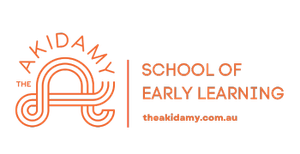Managing Medical Condition Procedure
Policy Content
To support children’s wellbeing and manage specific healthcare needs, allergy or relevant medical conditions, our School will work in accordance with the Education and Care Services National Regulations to ensure health related policies and procedures are implemented. We aim to take every reasonable precaution to protect children’s health and safety by explicitly adhering to individual medical management and risk management plans and responding to any emergency situation should it arise.Working in conjunction with the Medical Conditions Policy, this procedure provides detailed steps for management and educators to follow when a child with a health care, allergy, or medical condition enrols at the School.
Education and Care Services National Law or Regulations (90, 90(1)(iv), 91, 92, 93, 94, 95, 96, 136 and 170) NQS QA 2: Element 2.1.1 and 2.2.1 Wellbeing and comfort, health practices and procedures .
| STEP 1 - ORIENTATION AND ENROLMENT |
|---|
| 1 | At the time of enrolment, the Nominated Supervisor will ask families if the child has any health care need, allergy or medical condition |
| 2 | The Nominated Supervisor will ensure the enrolment form includes health care needs, allergies or identified medical conditions for the new child |
| 3 | All families will be informed of the School’s management of the Medical Conditions Policy through the Family Handbook during the enrolment process |
| 4 | The Nominated Supervisor will meet with the family to discuss the details of the health care need, allergy or medical condition and what adjustments may be needed to the practices of the School or environment to ensure inclusion of the child |
| 5 | The Nominated Supervisor will advise the family of the Medical Conditions Policy and any relevant policies such as Anaphylaxis Management Policy or Asthma Management Policy, including the additional requirements for enrolment such as a Medical Management Plan and the development of a Risk Minimisation Plan and Communication Plan |
| 6 | The Nominated Supervisor will ensure families sign the Enrolment Form Inclusions form to acknowledge information relating to Medical Management Plans are to be kept up to date at all times |
| STEP 2 - MEDICAL MANAGEMENT PLANS |
|---|
| 1 | The family will develop a Medical Management Plan in consultation with the child’s registered medical practitioner. This must be completed before the child can attend the School. |
| 2 | The Medical Management Plan is to include any ASCIA Anaphylaxis or Asthma Action Plan |
| 3 | The Nominated Supervisor will ensure parents/guardians provide consent to display Medical Management Plan through the Permission to Display Medical Management Plan |
| 4 | The Nominated Supervisor will ensure individual Medical Management Plans are displayed in the child’s room, staff areas and food preparation areas |
| 5 | During orientation and induction educators are informed about the School’s procedures and policies in relation to managing children with diagnosed health care needs, allergies and medical conditions |
| 6 | The Nominated Supervisor will ensure any medications required as part of the Medical Management Plan are available at the school each time the child attends |
| 7 | Educators will ensure medications are stored as per Medical Management Plan and Administration of Medication Policy |
| 8 | Educators will ensure an Administration of Medication form is completed each time medication is administrated and acknowledged by the parent/guardian each day |
| 9 | Educators will ensure Medical Management Plans and any medication are taken from the School in the event of an emergency evacuation or on an excursion |
| STEP 3 - MEDICAL RISK MINIMISATION PLANS |
|---|
| 1 | Using the information gathered from the Medical Management Plan, the Nominated Supervisor in conjunction with family and Lead Educator will develop a Risk Minimisation Plan to:
|
| 2 | The Nominated Supervisor will consider if any training or professional development is required for educators as part of the Risk Minimisation Plan |
| 3 | The Risk Minimisation Plan will record any dietary modifications as part of the Medical Management Plan |
| 4 | Risk Minimisation Plans are required to be reviewed at least annually or revised with each change to a child’s Medical Management Plan |
| STEP 4 - MEDICAL COMMUNICATION PLAN |
|---|
| 1 | The Nominated Supervisor will create a Communication Plan for each child and ensure all educators and staff are advised of individual Medical Management Plans and Risk Minimisation Plans and method of communicating with the family |
| 2 | The Nominated Supervisor will consult with each family and inform how the Communication Plan will be maintained within the School to ensure their child’s health and safety |
| 3 | The Nominated Supervisor will ensure relief staff, students, volunteers, Early Intervention Specialists are informed of and familiar with any Medical Management Plans and Risk Minimisation Plans upon initial contact with the School. e.g., orientation process, first visit |
| 4 | The Nominated Supervisor will communicate any individual Medical Management Plans to kitchen staff and discuss strategies identified within the Risk Minimisation Plan |
| 5 | Any changes to a child’s Medical Management Plan and Risk Management Plan will be communicated to educators within the Communication Plan by a child’s parent |
| 6 | The Nominated Supervisor will routinely check all Communication Plans |
Did this answer your question?
If you still have a question, we’re here to help. Contact us
